By: Dr. W. Scott West, Chief Medical Officer, Nashville NeuroCare Therapy
About the Author: Dr. W. Scott West
In our country, depression is an epidemic.
According to research by NIMH, in 2019, “an estimated 19.4 million adults in the United States had at least one major depressive episode. This number represented 7.8% of all U.S. adults.” For Tennessee, ranked as the third most depressed state in the nation in a 2022 study on MSN, a staggering 25% of the population has been diagnosed with depression. With numbers like these, depression is more than prevalent. Prevalence, of course, doesn’t mean it’s not misunderstood.
If you’ve been struggling with your moods and mental health, you might be wondering if you could be depressed. Asking yourself that question can be scary, but it’s also the first step toward finding the help you deserve, whether you have clinical depression or not. This, of course, begs the questions:
What is depression, really?
What makes it different from general sadness and lethargy?
How can you tell if you or a loved one is suffering from something more serious than the blues?
Because there are so many things depression can be, it could be helpful to explain what depression is not. As MHA asks, “When you’re sadder than usual, you might say you feel ‘depressed.’ But how do you know when extreme sadness crosses over into clinical depression?” After all, everyone feels sad sometimes.
If you’ve lost a job, are experiencing a breakup, or are mourning the loss of a loved one, it’s natural and even healthy to feel sad. Sadness— even extreme sadness— is a normal reaction to distressing life events. Depression, however, is more than just sadness. Depression is a serious mood disorder with “symptoms that affect how you feel, think, and handle daily activities, such as sleeping, eating, or working” (NIMH).
When you’re depressed, you might lose interest in things that used to bring you joy, feel fatigued all the time, have trouble completing basic tasks, or even experience thoughts about self-harm and suicide. A depressive episode lasts at least two weeks. Sometimes depression is context-dependent, like in Postpartum Depression and Seasonal Affective Disorder. Other times, depression is co-occurring with other mental illnesses such as addiction, generalized anxiety, or eating disorders. Sometimes, depression just is regardless of circumstances or obvious external factors.
Recognizing our symptoms of depression can help bring us peace and direction. When we see that what we experience isn’t unique to just us, we learn that we’re not alone and there is hope for successful treatment. Here’s a brief introduction to some prevailing types of depression— do you recognize your symptoms in any of these?
- Major Depressive Disorder
Major Depressive Disorder is a mood disorder characterized by a “persistent feeling of sadness and loss of interest” (Mayo Clinic). To be considered depression rather than simply the blues, symptoms including hopelessness, fatigue, disinterest in activities once enjoyed, changes in appetite and sleep, and suicidal thoughts must persist for at least two weeks.
- Persistent Depressive Disorder (Dysthymia)
PDD, previously called dysthymia, is a form of depression that, while similar to MDD, is “characterized by chronic low-level depression that is not as severe, but may be longer lasting than, major depressive disorder” (NIMH). To be diagnosed with PDD, you must be experiencing a combination of symptoms for at least two years.
- Postpartum Depression
While many women experience extreme feelings after giving birth, postpartum depression is lingering feelings of hopelessness, emptiness, sadness, and disconnectedness from your baby. If your baby blues don’t dissipate after a couple weeks after giving birth, you might want to seek help for postpartum depression, recommends the Office on Women’s Health.
- Seasonal Affective Disorder
Seasonal Affective Disorder, aptly called SAD, is depression triggered by changes in the seasons. Many people experience SAD in the fall and winter when “shorter days and less daylight may trigger a chemical change in the brain leading to symptoms of depression” (Hopkins Medicine). SAD, however, is not limited to the winter months. Many people do experience Seasonal Affective Disorder in the summer as well.
- Bipolar Disorder
Bipolar Disorder is a mental illness marked by “dramatic shifts in a person’s mood, energy and ability to think clearly” (NAMI). Those with bipolar experience both high and low moods, called mania and depression, respectively, that are more extreme than the highs-and-lows most people without bipolar would experience. Multiple different types of bipolar vary based on the severity and length of these manic and depressive episodes.
An important note— you might not be clinically depressed, but that doesn’t mean you’re not struggling. Many excellent counseling resources are available to help you think through, talk through, process, and heal. Especially as our society is collectively experiencing burnout from the ongoing pandemic, don’t be afraid to seek help regardless of your diagnosis or lack thereof.
If you recognize yourself or a loved one in these symptoms of depression or you already know you’re depressed, there is hope for you. Successful treatments exist, and help is out there. You have probably heard of cognitive behavioral therapy, also known as talk therapy, and antidepressant medications. But have you heard of TMS Therapy?
TMS Therapy, short for Transcranial Magnetic Stimulation, is an innovative therapy that treats depression by using magnetic-pulse technology to stimulate areas of the brain that have low metabolic activity, or, in other words, aren’t working to their full potential.
We’ve learned that the brains of people with depression and the brains of people without depression look and function differently. Most notably, centers that regulate mood aren’t as active in a depressed brain. TMS Therapy helps encourage your brain to heal itself by building and strengthening the neural networks that help control your mood and behavior. This offers natural, lasting relief from depression.
We specialize in TMS Therapy for depression treatment at Nashville Neurocare Therapy. While “stimulating the brain with magnets” might sound a little intimidating, TMS Therapy is not to be confused with electroconvulsive therapy (aka shock therapy). TMS Therapy is completely comfortable and safe, perfectly natural, and offers no adverse drug-like side effects commonly associated with antidepressants. Though it’s a lesser-known therapy, most private and public health insurances cover TMS Therapy, and the American Psychiatric Association even recommends TMS Therapy as an alternative to antidepressants if your medications aren’t working for you.
If you aren’t finding relief from your depression through talk therapy or medication alone, talk to your doctor about TMS Therapy. Treatment for depression is not one size fits all, and there is hope for you. If you’d like to learn more about TMS Therapy and how it could help you or somebody you love, feel free to request a consultation with our office. We’d love to see if TMS Therapy is a good fit for your path to healing.
Nationally recognized, board-certified psychiatrist, Dr. W. Scott West, blazed the trail for TMS therapy in Tennessee as the first physician to offer this advanced technology in 2010. With 30+ years experience in clinical depression, Dr. West leads the Nashville Neurocare team.
- Board Certified Psychiatrist
- Specialty: Certified TMS Psychiatrist since 2010
- Diplomate: The American Board of Psychiatry and Neurology
- Distinguished Fellow: American Psychiatric Association
- Residency: Vanderbilt University, Hospital Department of Psychiatry
- Medical School: University of Tennessee, Knoxville, Center for the Health Sciences
- Hospital Affiliations: Vanderbilt University Hospital, St. Thomas Hospital


